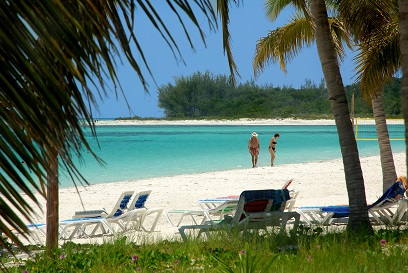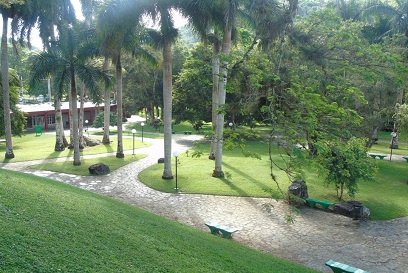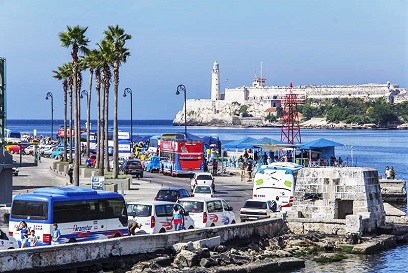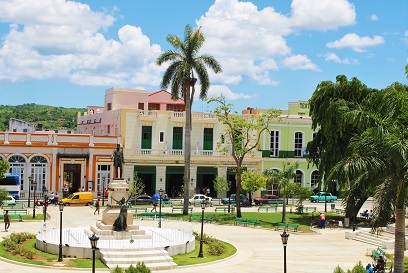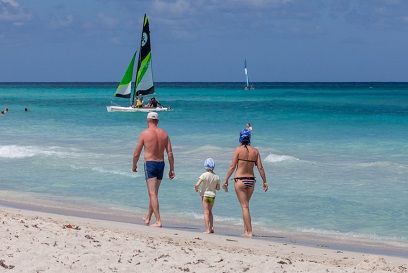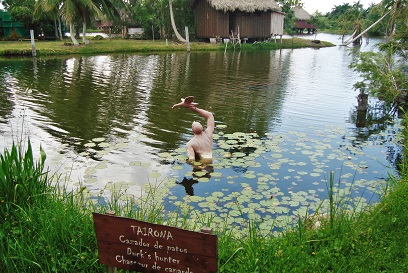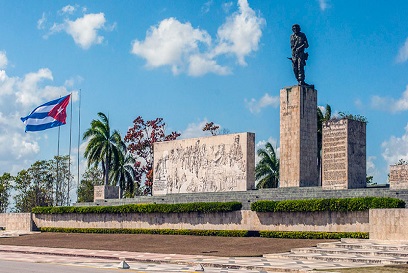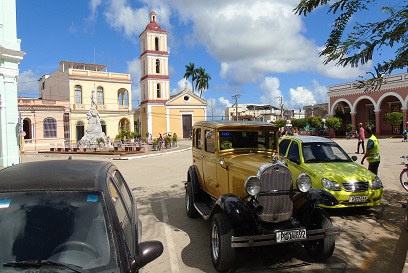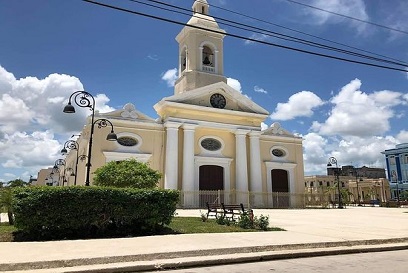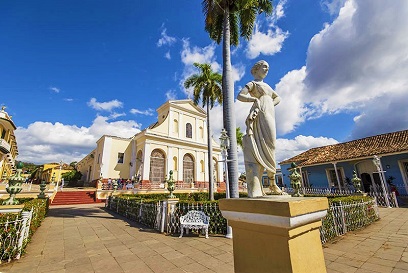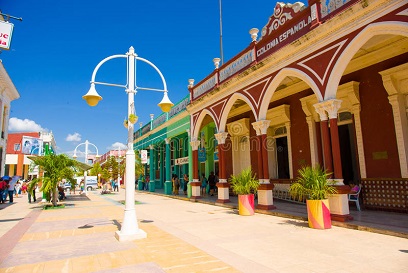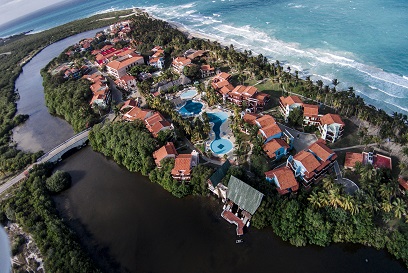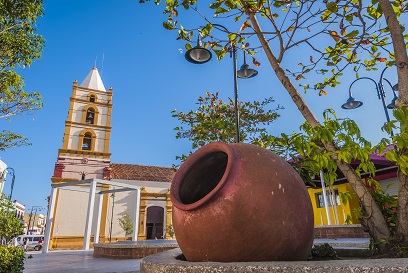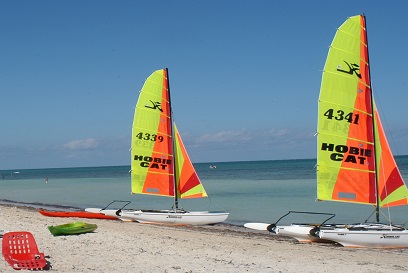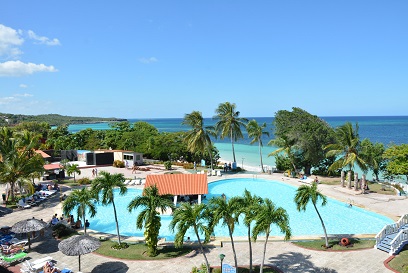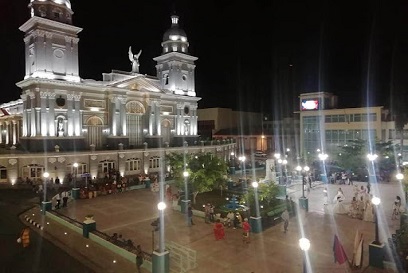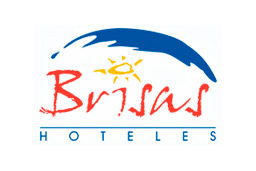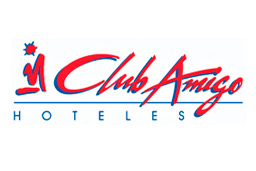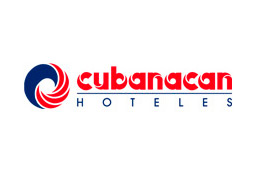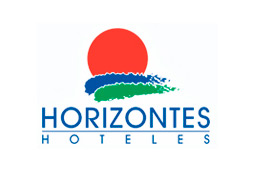
About Cuba
Cuba covers an area of 110 992 km ². It is a long narrow island, looking like alligator, which amounts to 1 200 km long. Its widest part is 210 kilometers and the narrowest 31 kilometers.
It is located in the westernmost part of the Caribbean Basin, just outside the entrance to the Gulf of Mexico. This is long and narrow land disposed horizontally between the two Americas at the entrance of Gulf of Mexico in the northwestern Caribbean Sea, a strategic position which once made him a very coveted. The Cuban archipelago is made up of over
4 000 cays and islands.
On a map of the region, Cuba is easily recognized by their size, because it is the largest of the Antilles and also because of its shape resembling a crocodile. Closest territories are: the East, Haiti (77 km) west, Yucatan, Mexico (210 km) north Florida, USA (180 km) and south, Jamaica (140 km).
About 300 natural beaches of fine white sand and crystal clear waters. The best known is Varadero, however, there are others. Three mountain ranges, two long regions of savanna and numerous valleys known worldwide like Viñales, Yumurí and Sugar Mill, tour the island in its extension.
Warm, clear waters, amazing biodiversity and conservation of ecosystems, the variety and their disparate coral reefs attract scuba diving enthusiasts. In our waters home to some 500 species of fish and 200 of sponges, coral gardens, caves, meadows of gorgonians as well as molluscs and crustaceans, algae and sea fans. North of the eastern central part, just the province of Camaguey, is one of the best preserved of the planet barriers and just 2 km from the coastline.
To complete the wonderful underwater world unite beautiful caves, vertical walls, tunnels, cliffs, bayous and valuable species, among other significant attractions.
The Cuban fauna is very attractive, it retains some rarities like the bee hummingbird or humming bird, the smallest bird in the world. The smallest frog, a tiny butterfly bat and a scorpion called no higher than 14 mm, are part of our unique species. Endemism is also seen when it comes to amphibians and reptiles. The crocodile, named on farms, is another characteristic species of Cuba. There are reported some 400 species of birds, none of which is harmful to humans.
The flora is rich and diverse. The country has more than 300 protected areas that cover approximately 22 percent of the country. Cuba has six areas declared by UNESCO as a Biosphere Reserve: Guanahacabibes Peninsula, Sierra del Rosario and the Zapata Swamp National Park, in the Western Caguanes National Park in the Center, and Park and Baconao Blades of Toa in the East.
More than 50 percent of the insular flora is endemic and its range is evident when one considers that the country is represented four percent of the total flora of the planet. In the groups most represented plant and major attraction are the orchids, cacti and palms, the national tree.
The meaning of the word Cuba might be land, the Aboriginal meaning of this word, belonging to the language of the Taíno culture araguaco, according to criteria released by the historiography. Another meaning could be attributed recently dome, according to new evidence submitted by current studies that attribute a Hispanic-origin to the name of the Greater Antilles.
It is in the city, where lies around 70% of the population, the eclectic architecture prevails, although some urban centers like Havana or Trinidad, among others, preserve the colonial atmosphere, to the point of being declared a World Heritage Site. But there is, in general, a wide variety of cultural events.
In rural areas the bountiful nature allows you to display spectacular landscapes and corridors for migratory birds and other attractions. Organized peasant life in different ways gives original features the Cuban countryside.
When and how to travel
At any time of year you can go to Cuba. In the early months is more fresh and cool and if breaks a cold front will be a few days only.
From April to September, almost without interruption, the sky is clear and the temperature is warm, making it ideal for going to the beach or playing outdoors. It rains often in mountainous areas and more rarely on the plains and coasts. The months of July and August are the hottest.
Cuba is linked to the major capitals and cities in Latin America and Europe through more than 60 scheduled and charter and in the country operate 10 international airports, plus a dozen marinas and ports distributed along the coast north and south, arrivals by sea provide the best conditions of berths.
Shopping
In each hotel, villa and airport shops are open daily, which are designed to meet the most frequent needs and tastes of the travelers who move to Cuba. In cities and tourist destinations will always be a good market with artisanal manufacturing.
Political-administrative division will
The Republic of Cuba is composed of 14 provinces and the special municipality of Isla de la Juventud. From west to east, these provinces are: Pinar del Rio, La Habana, Ciudad de La Habana, Matanzas, Cienfuegos, Villa Clara, Sancti Spiritus, Ciego de Avila, Camaguey, Las Tunas, Holguin, Granma, Santiago de Cuba and Guantanamo.
Information
The best information is obtained directly in the folders of the hotels or tourist bureaus, where they can manage their trips, make reservations for various restaurants, cabaret and shows. In large cities with large numbers of international travelers and Havana, Santiago de Cuba, Camagüey, Matanzas, Cienfuegos and Trinidad, among others, some agencies operate under the Ministry of Tourism of the Republic of Cuba known as INFOTUR, with the latest information tourism services, proposals for optional tours, transportation and accommodation.
Transportation
For those wishing to travel independently there is a complete and diversified offer bus service (connecting Cuba), taxis, rental cars and vans, on which certain information may be obtained in the Bureaus of Sales or the folder of your hotel. For services organized tours and transfers in / out using comfortable buses of different capacities.
Medical Care
In the hotels are guaranteed primary health care. There are also international clinics and guarantee to cover emergencies in hospitals. It is always recommended that the traveler is covered by an insurance policy. The country has a system of health care is considered unique in Latin America, with total population coverage and an ongoing epidemiological work of sanitation are the foundation of the successes of the island in this important area of social life.
Tourism Visa Extensions and changes of mode
To extend your stay in Cuba, tourists should contact the travel desk of your hotel or villa, also, if you want to change the modality that has traveled the country, the tourism bureau for your hotel or villa, make the change necessary.
The essential thing in your suitcase
Light clothing, clear and comfortable, shoes, eyewear and swimwear. Something more formal for the evenings, insect repellent, shaving cream or sunscreen. If you travel between January and February, do not forget a jacket.
Other Information
Official Language: Spanish
National Anthem
Composed by Pedro (Perucho) Figueredo in 1867, in the city of Bayamo.
National Flag
Established in 1849. It was hoisted for the first time in 1850 in the city of Cardenas.
Shield
It symbolizes the geographic position of Cuba, its aspiration for a bright future, its sovereign status and the industrious and unyielding character of his people.
National Flower
La Mariposa (Hedychium Coronarium Koenig).
National Bird
The Tocororo (Priotelus temnurus).
National Tree
The Royal Palm (Roystonea Regia).
Religion
Secular country with freedom of religion. Predominantly Catholic and Afro-Cuban religions.
Currencies and Payment
The official currency is the Cuban Peso addition Convertible Peso (CUC). Prices in all the tourist services are set at CUC, so that when they arrived at the airport must change, so may change banks and hotels. In major cities and towns are Casas de Cambio (CADECA) to convert currencies and CUC Pesos. Credit cards accepted Cabal, Transcard, Visa and MasterCard who have not been issued by U.S. banks or their subsidiaries.
Immigration Regulations
All visitors must hold a valid passport and the corresponding visa or tourist card, except in cases of countries with which Cuba has visa exemption agreements. Tourist Card, both individual and groups, can be requested at the Cuban consular representatives, travel agencies and airline offices.
Airport tax
Departure tax of airports in Cuba is 25.00 Cuban convertible pesos (CUC).
Customs regulations are tax exempt personal items, 2 bottles of liquor, 1 carton of cigarettes and up to 10 kg of drugs. Can import goods worth of $ 250.00 USD; of this amount, 50.00 USD are exempt from payment and the remaining 200.00 USD must be paid a tariff of 100%.
Not allowed:
- Narcotics. Prohibition against possession, trafficking, consumption and sale of drugs and narcotics.
- Pornography. The introduction of any pornographic material.
- Blood Products.
- Mobile and wireless microphones.
- Electric Households Appliances.
- Firearms, except those duly authorized hunting.
- Import or export of Cuban pesos.
The cash input is unlimited. To re-export an amount equal to or greater than 5 000.00 USD is required to submit the relevant customs declaration.
On departure Cuba authorized the free export of 23 cigars individually or in containers. For most quantity, the traveler must submit to Customs a copy of the invoice for the purchase. The cigars must be in original packaging, with the official seal. To remove works of art and antiques must request permission from the National Registry of Cultural Property Direction of the Ministry of Cultural Heritage. The payment for excess baggage at the point of origin does not relieve the traveler to pay, on arrival to Cuba, the appropriate fee based on the value of the items.
Health Regulations
Only required to present the International Certificate of Vaccination for travelers from countries where yellow fever and cholera are endemic or have been declared infected areas by WHO. There are restrictions on products of animal or vegetable.
Electric current
110V., 60 Hz plugs with flat prongs. There are in Cuba some hotels and other facilities where is possible to use 220V.
Our suggestions
Beaches:
Pinar del Río: Cayo Levisa
Matanzas. Varadero beach
Zapata Peninsula: Playa Giron and Playa Larga.
Cienfuegos Rancho Luna beach
Trinity Peninsula Ancon
Camaguey, Playa Santa Lucia
Las Tunas: Playa Covarrubias: Playa Guardalavaca
Holguín: Playa Marea del Portillo, Granma
Santiago de Cuba: Baconao and Chivirico.
Cities:
Havana
Santa Clara
Cienfuegos
Sancti Spiritus
Trinidad
Santiago de Cuba
Landscapes.
Pinar del Río, Viñales Valley
Trinity Valley Mills and Topes de Collantes
Santiago de Cuba: Baconao Coast, from the Gran Piedra, Marea del Portillo Road tourism - Santiago de Cuba, on the southern coast of eastern Cuba.
Diving.
Pinar del Río: Cayo Levisa
Zapata Peninsula: Playa Giron and Playa Larga.
Camaguey, Playa Santa Lucia
Las Tunas: Playa Covarrubias.
Granma: Marea del Portillo.
Santiago de Cuba: Baconao and Chivirico.
FESTIVALS:
Carnaval de Santiago de Cuba (July).
Parrandas Remedies (December).
Camajuaní Carnival (August).
Bejucal Parrandas (December).
Details. Traditional music at the Casa de la Trova, Trinidad, navigate through the Cueva del Indio, in Viñales, Pinar del Rio and watch from a rooftop the luminous bay of Cienfuegos.
Favorites. Trinidad paved, popular musicians Casa de la Trova in Santiago de Cuba.
Culture
Cuba has a prestigious culture.
Museums throughout the country, dedicated to the most diverse topics as: history, revolution, music, science, colonial art and decorative, guns, cars, religion, snuff, rum, sugar, etc..
Cultural and recreational facilities for ballet, concerts, popular music, dance, an art gallery.
International events such as the International Ballet Festival, International Festival of New Latin American Cinema Festival Jazz Plaza, Havana Biennial, Book Fair, Cuba Dance, The May Festival, among others.
Heritage values and good architectural conservation status of different groups of buildings are centuries old. The fortifications of the Spanish military engineering from the colonial era can be seen in many cities.


 Spanish
Spanish
